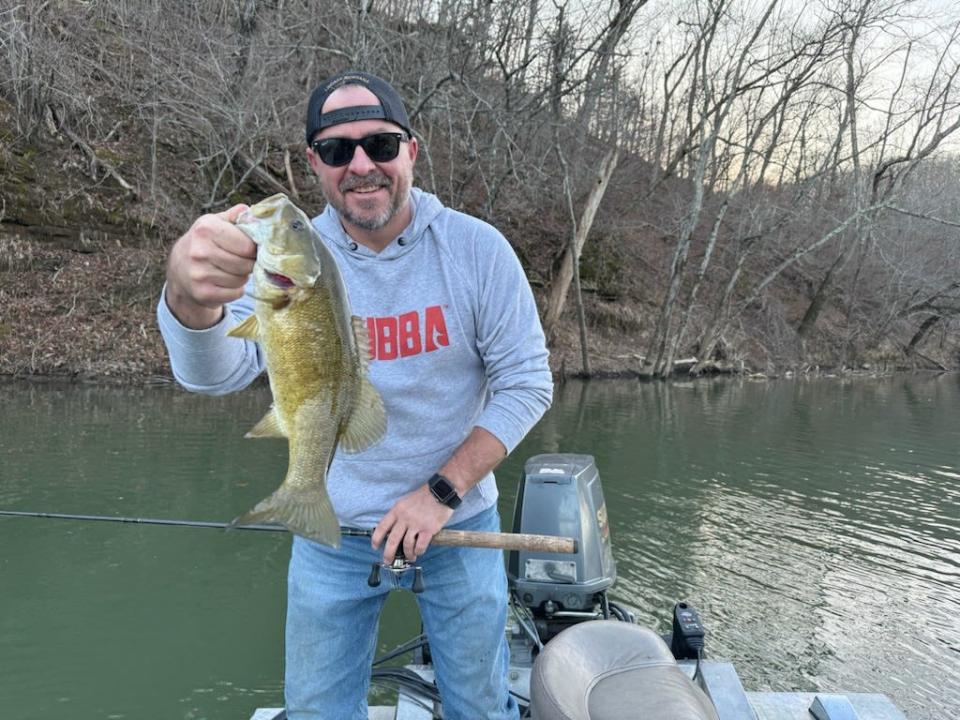Driftwood Outdoors: Midwest outdoor opportunities abound — even when it doesn’t seem like it

We are coming to the end of ice fishing in the Midwest, entering a tough time to beat for bass fishing, and hearing the final call to get our turkey gear in order before the coming season.
Out in the Central Flyway, light geese are still hitting the ground, trappers across the region are collecting pelts, and crappie anglers are taking advantage of the pre-spawn bite on lakes and reservoirs. It might seem like there aren't a lot of outdoor opportunities right now, but really there are endless options.
Warmer days are soon to come, but don't overlook all the outdoor activities happening right now. Here are some suggestions for the near future.
Iowa: Paddlefish snagging
Paddlefish regulations in Iowa are about as complicated as the worst Western draws for bighorn sheep. But the state has an abundance of these prehistoric fish, and each spring anglers pursue them with snagging equipment. The season is open all year on interior waters, but differs on rivers.
The Mississippi River and Missouri River both produce paddlefish below numerous dams. The DNR suggests the Iowa River from Coralville Lake to River Junction and the Cedar River from Cedar Rapids to Moscow. In most of the state, the daily limit is two with a possession limit of four, but there are places where special tags are required. Your best bet is to make sure you read the paddlefish section of the Iowa Fishing Regulations booklet.
Kentucky: Dale Hollow smallmouth
Dale Hollow produced the world-record smallmouth bass. Caught in 1955, the 11-pound, 15-ounce behemoth of a bronzeback set the bar anglers have been trying to reach ever since.
Dale Hollow remains as good of a bet for producing the record-breaker as anywhere, and March is a prime time to hook into a lunker. With water temperatures still cold in March, a slow presentation is necessary. Jigs, swim baits and soft plastics work on or close to the bottom are go to tactics this time of year.
Minnesota: Ice-fishing eelpout (burbot)
Walker, Minnesota is home to the International Eelpout Festival. I suppose that’s enough to give the state the nod as our nation’s eelpout capital. These fine-tasting fish are often targeted at night. Glowing lures, such as jigs with plastic bodies and spoons, are top producers.
Lake of the Woods, Mille Lacs and Leech Lake are home to good populations of eelpout, but so are most deep lakes across the state. Eelpout are considered a rough fish in Minnesota, so there is no limit or season.
Nebraska: Light Goose Conservation Order
The Light Goose Conservation Order (LGCO) is a special season set by the U.S. Fish and Wildlife Service to help reduce the number of light geese because they are causing harm to critical tundra habitat. Killing these birds is harder than most might think. They are hunted about nine months out of the year from Canada to the Gulf of Mexico, so it’s easy to understand how that kind of pressure can make a species tough to kill.
Light geese travel in massive flocks, so it stands to reason you need giant spreads of decoys to attract them. Smaller spreads will work, but typically the more decoys the better. In Nebraska, the LGCO runs the entire month of March in all zones.
North Dakota: Badger hunting
Trapping might be the most common method of taking badgers in North Dakota, but these tough mammals, which are of the same family as otters and wolverines, may also be hunted. Badgers may be taken with firearms, pre-charged pneumatic air guns, and archery equipment, which includes crossbows.
Houndsmen who enjoy the chase can legally pursue badgers with dogs statewide, year-round. They are most often found in dry, open grasslands. Hunting hours are from 30 minutes before sunrise to 30 minutes after sunset each day.
Ohio: Mosquito Lake crappie
Located in Northeast Ohio near the city of Warren in Trumbull County, Mosquito Lake is the second-largest inland body of water in Ohio. Crappie can be found throughout the 6,500-acre reservoir, but March is when they start moving up from the depths into shallower water in preparation to spawn.
With a 9-inch minimum length limit and a 30-fish daily limit, anglers who find fish willing to bite can put a few nice bags of filets in the freezer. Look for fish around structure located with a sonar along old road beds. Small jigs and minnows under a bobber are go to offerings.
Wisconsin: Otter and beaver trapping
While there is no bag limit on beavers, only one otter per harvest authorization is allowed. With the exception of Zone D, beaver and otter trapping is open statewide through the month of March. Trapping remains an important aspect of conservation by providing population control of both beaver and otters.
Learning to trap effectively is a skill best obtained under the tutelage of one with experience. The Wisconsin Trappers Association offers all the knowledge and knowhow a newbie could hope for.
Kansas: Running furbearers
During the running season, furbearers cannot be killed or taken, but dogs can be turned into well-oiled machines. The thrill of the chase is alive and well, but this season is best used for canine training. Furbearers legal to run include bobcat, opossum, raccoon, red fox, and gray fox.
The season is open from March 1 through Nov. 8. Running is legal 24 hours a day. It’s illegal to carry a firearm or trapping equipment while running furbearers.
See you down the trail.
For more Driftwood Outdoors, check out the podcast on www.driftwoodoutdoors.com or anywhere podcasts are streamed.
This article originally appeared on Columbia Daily Tribune: Driftwood Outdoors: Midwest outdoor opportunities abound — even when it doesn’t seem like it

